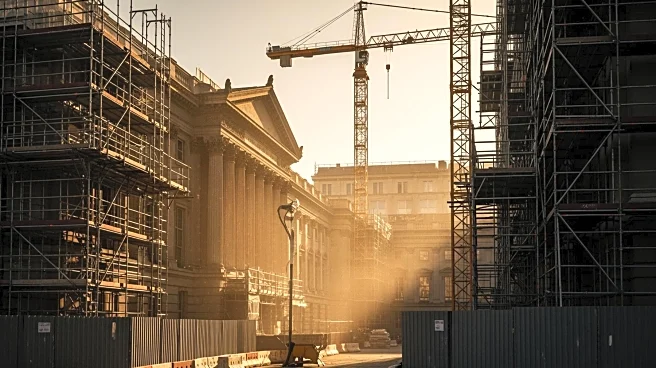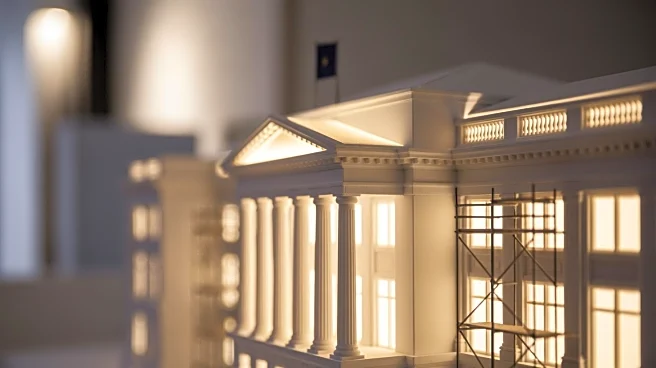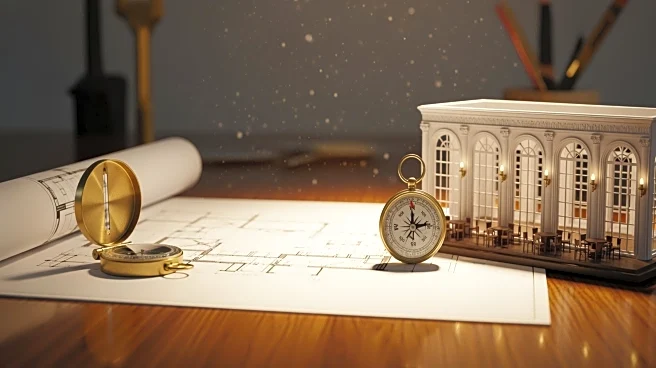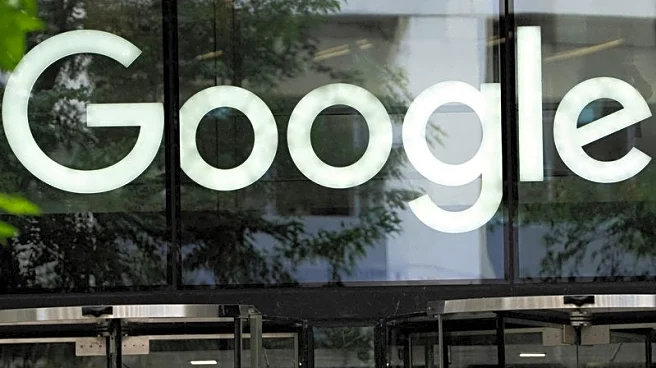What's Happening?
The White House is undergoing significant renovations as President Trump has ordered the demolition of the East Wing to make way for a new 90,000-square-foot ballroom. This decision has sparked controversy
due to the lack of public input and the historical significance of the East Wing, which traditionally housed the first lady's offices. The modern version of the East Wing was added in 1942. The new ballroom is intended to host large-scale events, addressing the current limitations of the White House in accommodating major functions without resorting to temporary structures. The construction is estimated to cost $300 million, funded by President Trump and several major donors, including Google, Amazon, Meta, Microsoft, and Apple.
Why It's Important?
The demolition of the East Wing and the construction of a new ballroom at the White House represent a significant change in the use and appearance of this historic site. The decision has drawn criticism from preservationists and the public, highlighting tensions between modernization and historical preservation. The project underscores the influence of private funding in public spaces, as major tech companies are contributing to the construction costs. This development may set a precedent for future renovations at national landmarks, where private interests play a substantial role. The ballroom's construction aims to enhance the White House's capacity to host international leaders and events, potentially impacting diplomatic relations and the U.S.'s global image.
What's Next?
The National Trust for Historic Preservation has expressed concerns and urged the National Park Service to halt the demolition until the plans undergo public review. This could lead to legal challenges or delays in the construction process. The White House's response to criticism has been dismissive, framing the project as a necessary enhancement. As construction progresses, further scrutiny from preservationists and the public is likely. The completion of the ballroom will increase the White House's event-hosting capabilities, potentially influencing future diplomatic engagements and state functions.
Beyond the Headlines
The renovation project raises questions about the balance between preserving historical sites and adapting them for modern needs. The involvement of major tech companies in funding the construction highlights the growing intersection between private enterprise and public infrastructure. This could lead to discussions about the role of corporate influence in government projects and the ethical implications of such partnerships. Additionally, the project may prompt debates about the prioritization of historical preservation versus functional upgrades in national landmarks.












